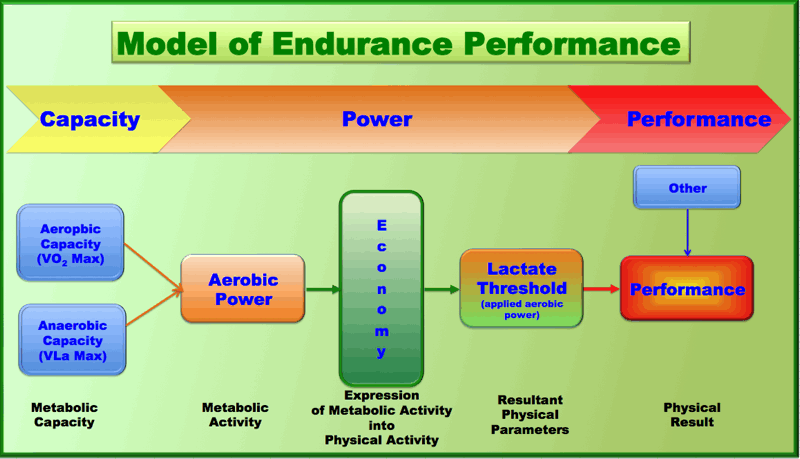What is Sports Physiology?
The human body is a complex dance between heart, lungs, circulation, muscles, structure, and chemistry. All of this is referred to as physiology, and when we talk about athletes, physiologists are looking to understand what makes them able to do what they do, particularly when it seems that some are “naturally” better at some things than others.

In Sports Physiology, the focus is on what enables the human body to produce power necessary to compete. And from there, how can we train better, what are the limits, and what makes one individually ideally suited for some sports and not others.
In modeling cyclists, we have these physiological considerations operating in the background to enable power generation. They are too complicated to be the basis for a model. So it is left that we begin with a cyclist’s power generation ability and called it their fitness level. How they got to that level of fitness’s is another subject. However, it is useful to at least survey what is called performance models to understand what sports scientists are focused on.
Performance Models
Another term for power generation ability is performance, and physiologists are constantly looking to understand what are the key elements fundamental to an individual athlete’s performance level. Here is one such model, and it provides a useful illustration of some of the factors that are considered key.

Physiological Factors
The following provide a quick summary of these key physiological factors:
Aerobic Capacity and VO2 Max
Aerobic Capacity refers to the ability of muscles to convert Oxygen into power. This is measured by VO2 Max and is a function of Heart, Lungs, Circulatory System, and Muscles. It is sometimes described as a measure of the Heart because the higher the rating, the larger the physical heart size becomes. This type of capacity is critical to endurance events.
Anaerobic Capacity and VLa Max
Anaerobic Capacity refers to the ability of muscles to convert stored Glycogen into power. This is measured by VLa Max. This type of energy production is critical to shorter events. It is also produces lots of by products that can quickly inhibit extended performance. Aerobic Capacity helps to deal with this and for that reason, sprinters work on developing both.
Economy
Whereas the first two elements are related to muscles, this is related to how the athelete uses their muscles. Economics is the management of scarce resources, and when used in regard to sports, it refers to effective use of power produced by the muscles via economy of motion.
Lactate Threshold
First, what is Lactate? In some articles, it is used interchangeably with Lactic Acid, though chemically, they are two different compounds. It is of interest in exercise because it was considered to be the cause for exercise induced Acidosis which is the development of “muscle burn.” More recent understanding argues that Lactate production is done to retard Acidosis, rather than is the cause of it. This only means that it serves as a marker for when muscle burn begins.
Lactate Threshold is measured by a level of exercise, below which an athlete can sustain themselves for an extended period of time. Above that level, they begin to experience exercise induce Acidosis. This measure is determined by starting out with a low level of stress and gradually increasing it until the athlete begins to show signs of stress. Another name for this factor is Functional Threshold.
Structure
One last component in performance analytics goes by the title of structure. This encompasses many different factors such as physical size and effectiveness and efficiency of internal systems. While cyclists tend to have normal heights, their weights and body fat tend to be exceptionally low.
Quantifying a Cyclist’s Performance Level
Cycling Physiology is of critical importance, particularly in training. But as indicated earlier, it is sufficiently complicated that a predictive model may not be possible. Rather, this type of analysis is important to “understand” what is going on. But being able to take a bunch of measurements and decide who will win a race is not possible.
In modeling cyclists, we should understand the number we are looking for is the output of physiology, the current fitness level that determines the ability to produce power. Physiology then becomes part of the explanation as to “how” the cyclist is able to produce that number.
